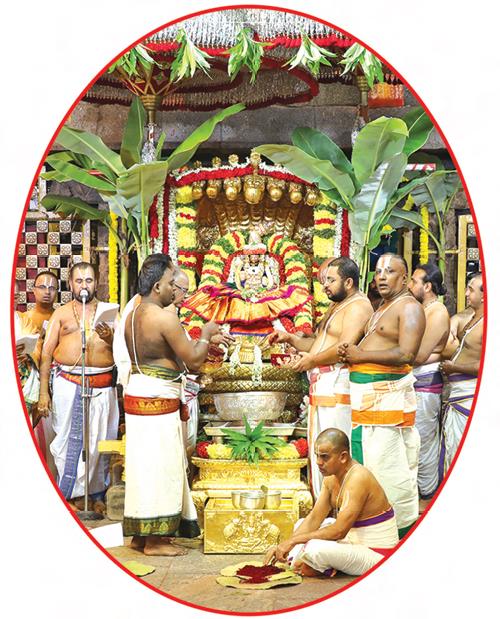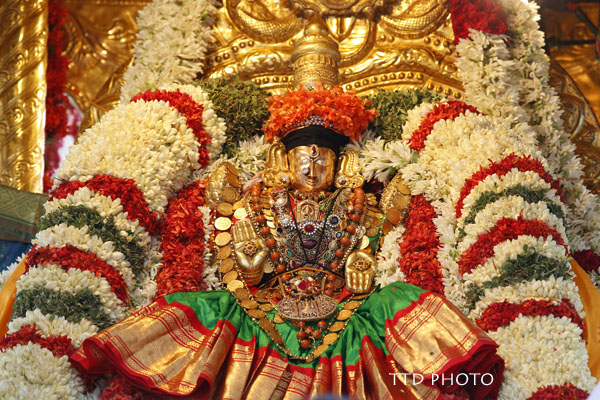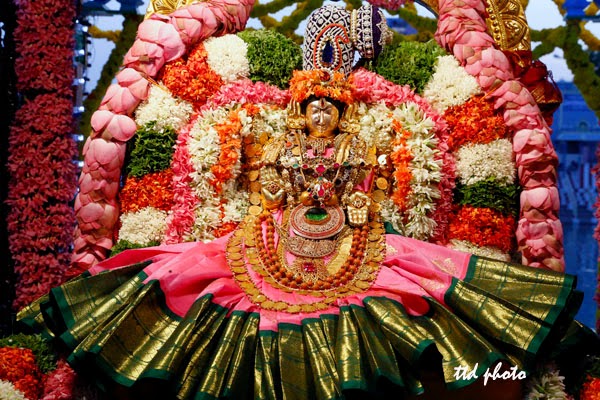Sri Padmavati Ammavaru Brahmotsavams 2024 Tiruchanur, the divine domain of Goddess Sri Padmavati Ammavaru, is one of the highly exalted places in Andhra Pradesh. The temple of Sri Padmavati Ammavaru is situated 5 km from Tirupati town and is exclusively dedicated to Sri Padmavati Ammavaru, the consort of Lord Sri Venkateswara. Tiruchanur Sri Padmavathi Ammavari Read More
Tag: Alamelu Mangapuram
Tiruchanur (also known as Alamelu Mangapuram) is a suburb and neighbourhood of Tirupati and is located in Tirupati district of the Indian state of Andhra Pradesh
Laksha Kumkumarchana at Padmavathi Temple – Tiruchanur
This article is about Laksha Kumkumarchana at Padmavathi Temple – Tiruchanur Sri Padmavathi Devi temple – Tiruchanur Goddess Padmavathi is the queen of Lord Srinivasa and enjoys a separate identity with equal status. The Goddess is inseparable and enjoys an equal position as she is a Purushakara or instrumental in protecting the devotees from the Read More
Why Padmavathi is not in Tirumala
Why Padmavathi is not in Tirumala Story Behind The husband, Srinivasa lives up the Seven Hills in ‘Ananda Nilaya’! His wife Alamelu Manga lives in Tiruchanur, down the hills in ‘Shanti Nilaya’! Doesn’t it look queer? There seems to be a special reason for this. Long ago, Padmavathi used to live in ‘Shanti Nilaya’, a Read More
Padmavati Devi
GODDESS PADMAVATI DEVI The sacred bath ‘ABHISHEKAM’ is performed to Goddess Padmavati Devi on Fridays. All the rituals and pujas offered to Ammavaru are as per the procedures of ‘PANCHARATRA AGAMA’. Goddess Mahalakshmi immersed herself in penance and emerged as ‘SRI PADMAVATI DEVI’ from a Lotus located at the center of Pushkarini (holy pond) on Read More



